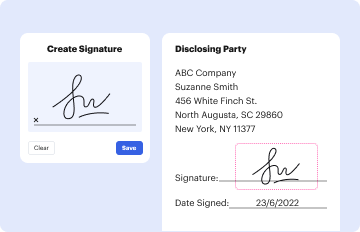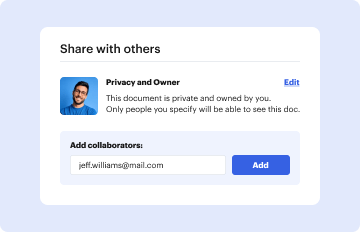Understanding Simple Purchase Agreement Templates
A simple purchase agreement template is a foundational document used to outline the terms and conditions for the sale of a property or business. This document serves as a clear agreement between the buyer and seller, detailing critical information such as purchase price, warranties, and deadlines. The templates can vary depending on the specifics of real estate transactions, such as residential properties or commercial businesses.
- Definition and Purpose: A purchase agreement serves as a legal contract that binds both parties to the sale terms while providing a framework for addressing potential disputes. It helps ensure both the seller and buyer are on the same page regarding their obligations and rights throughout the transaction process.
- Types of Transactions: The templates cater to various situations, which include residential real estate, commercial property sales, and the transfer of business ownership. Each use-case may require specific clauses and terms based on the nature of the transaction.
- General Format: While specifics can differ, most templates will outline pertinent details such as:
- Contact information for both parties
- Description of the property or business being sold
- Purchase price and payment terms
- Closing date and possession timeline
- Any contingencies or special conditions
How to Utilize the Simple Purchase Agreement Templates
When using a simple purchase agreement template, it is essential to customize the document appropriately to reflect the specific details of the transaction. The following steps outline how to effectively utilize these templates.
- Select an Appropriate Template: Choose a template that fits the specific nature of your transaction, whether it's residential real estate or a business sale.
- Enter Buyer and Seller Information: Fill out the names and contact details of all parties involved. This information ensures clarity about who is legally bound by the agreement.
- Specify Key Terms: Clearly define the property or business being sold, the agreed purchase price, and payment methods. Address conditions such as earnest money deposits and financing arrangements, if applicable.
- Outline Contingencies: Include any conditions that must be met before finalizing the sale. Common contingencies involve financing approvals, inspections, or the successful sale of another property.
- Review and Modify: Ensure that the document is reviewed carefully to avoid errors. Modify any sections as needed to reflect specific agreements that may not be covered in the template.
Steps to Complete a Simple Purchase Agreement Template
Completing a simple purchase agreement requires attention to detail to ensure that all necessary elements are included. The following steps serve as a guide:
- Gather Required Information:
- Collect contact details of the buyer and seller.
- Obtain a clear description of the property or business, including legal descriptions if necessary.
- Fill in the Template:
- Input all pertinent data in the designated sections of the template.
- Make sure to include the sale price, payment terms, and closing dates.
- Include Contingency Provisions:
- Detail any conditions that must be satisfied prior to the transfer of property or ownership. This might include home inspections or financing approvals.
- Draft Additional Clauses:
- Depending on the transaction's complexity, additional clauses may be necessary. These can include disclosures about property conditions, warranties, or seller obligations.
- Finalize and Sign:
- Ensure all parties review the document thoroughly before signing. Once satisfied, both buyer and seller should sign the agreement to make it legally binding.
Common Users of Simple Purchase Agreement Templates
The simple purchase agreement templates are particularly valuable for various participants in the real estate and business sectors. The following groups commonly utilize these documents:
- Real Estate Agents and Brokers: Often, agents use predefined templates to facilitate transactions on behalf of clients, ensuring that customer needs are met efficiently.
- Home Buyers and Sellers: Individuals involved in direct property transactions benefit from clear, standardized agreements that protect their interests.
- Business Owners: Entrepreneurs transferring ownership of a business can leverage these templates to streamline the sale process and safeguard against misconceptions between the parties.
- Investors: Real estate investors may use purchase agreements to acquire new properties, ensuring that all terms are properly documented and understood.


Key Legal Elements of Simple Purchase Agreements
A well-drafted simple purchase agreement should include several legal components to ensure enforceability and clarity. Key elements to consider:
- Identification of Parties: The agreement should clearly state the full names and addresses of all parties involved in the transaction.
- Property Description: A detailed description of the property or business being sold, including the address, tax parcel number, and any relevant legal information.
- Purchase Price: The total price for the property or business, along with payment methods and any deposit arrangement.
- Closing Procedures: Detailed steps for the closing process, including timelines for inspections, financing commitments, and final payments.
- Contingencies: Any agreements contingent upon inspections, financing, or any external conditions should be explicitly stated.
These elements are essential for creating a legally sound document and minimizing potential disputes.
Associated Terms Related to Simple Purchase Agreements
Understanding common terminology is critical when working with simple purchase agreements. Familiarity with these terms can enhance comprehension and execution of the contract.
- Earnest Money: A deposit made by the buyer to demonstrate serious intent, which is commonly held in escrow until closing.
- Contingency: A provision that must be satisfied for the contract to be valid, such as obtaining financing or passing inspections.
- Closing: The final step in a real estate transaction where ownership is transferred, often involving the signing of documents and payment of the purchase price.
- Escrow: A financial arrangement in which a third party holds funds or documents until the conditions of the agreement are met.
- Title: The legal right to own and use the property, along with the official documentation that proves ownership.
Becoming familiar with these terms can help parties engage in discussions about the document's content with greater confidence.
Variants of Simple Purchase Agreements
There are several variants of simple purchase agreements that cater to different transactions and needs. These include:
- Real Estate Purchase Agreement: A template specifically designed for the sale of residential or commercial properties, often including clauses specific to property law.
- Business Purchase Agreement: Tailored for business transfers, focusing on assets, liabilities, and the terms of sale pertinent to business operations.
- Land Contract: A type of seller financing agreement where the buyer makes payments directly to the seller, who retains the title until the full purchase price is paid.
Each variant is structured to suit specific types of agreements, highlighting the importance of selecting the right template for the transaction at hand.
Digital vs. Paper Versions of Purchase Agreements
The choice between digital and paper versions of simple purchase agreements can impact the execution and management of the document. Consider the following:
-
Digital Agreements:
- Can be easily edited and customized using various software tools.
- Facilitate easier distribution and signing, especially through electronic signature platforms.
- Enable instant retrieval and storage in secure digital formats.
-
Paper Agreements:
- Provide tangible documentation, which some parties may prefer for record-keeping.
- Can be more formal in terms of traditional business practices, especially if all parties are present for signing.
- May require physical handling and logistical management for distribution.
Choosing between digital and paper formats largely depends on the preferences of the parties involved and any regulatory requirements that may apply to the transaction.



